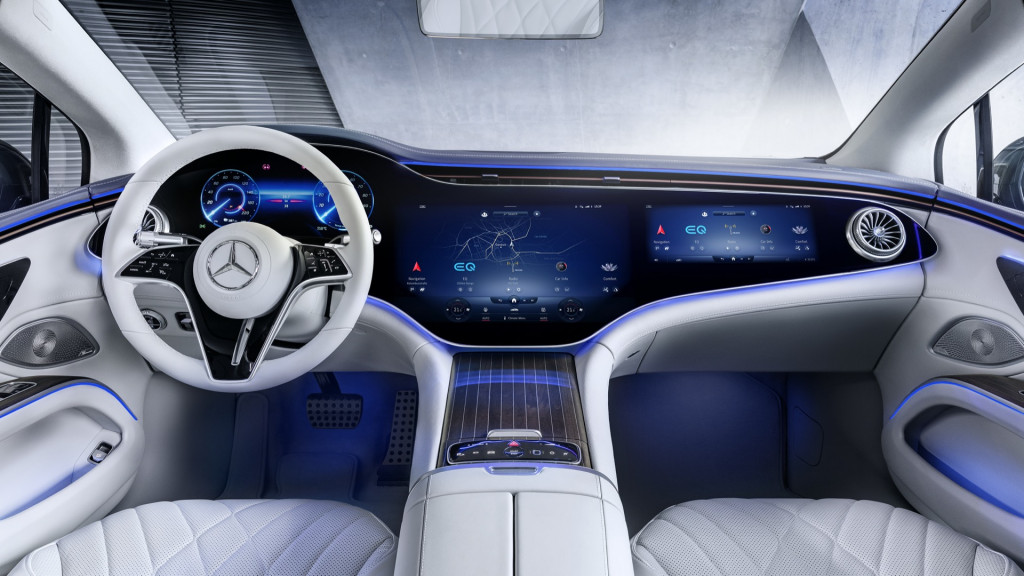At its annual meeting on Wednesday, Mercedes-Benz released a new, higher range figure of 770 kilometers (478 miles) for its upcoming EQS flagship sedan, which is scheduled to start production later this year.
That's a bit higher than the 700 km (just under 435 mi) Mercedes previously quoted, and it's based on European WLTP methodology. A range rating based on the United States' EPA testing cycle will be lower, but this opens up the possibility that the flagship's EPA figure will be higher than previously estimated.
That range figure will be achieved with a 108-kilowatt-hour battery pack which, along with the many luxury features Mercedes has promised, should make the EQS quite heavy. However, Mercedes also claims an industry-best drag coefficient of just 0.20, which will help improve efficiency somewhat.
With the Tesla Model S currently rated at 412 miles of range, and an upcoming Plaid+ version and the Lucid Air Dream Edition promising more than 500 miles, the EQS can't afford to arrive with much less than 400 miles of range on the EPA testing cycle, if it's to live up to its billing as Mercedes' new EV flagship.

Mercedes-Benz EQS interior
The EQS will also be the first of four Mercedes electric cars slated for the U.S. over the next two years. Production starts soon in Sindelfingen, Germany, and it's due to go on sale in the U.S. this fall.
After that will come the EQE sedan, which will be based on the same platform as the EQS, but will likely be a step down in size, price, and prestige. It's due for a late-2021 debut, with deliveries starting in 2022.
The EQS and EQE sedans will be followed by SUV variants, to be built in Alabama starting in late 2022. An EQS SUV will launch first, followed by an SUV version of the EQE.
Mercedes also has smaller electric cars planned, including the EQA crossover revealed earlier this year, and a forthcoming EQB electric crossover. These haven't been mentioned for the U.S. yet, though.












